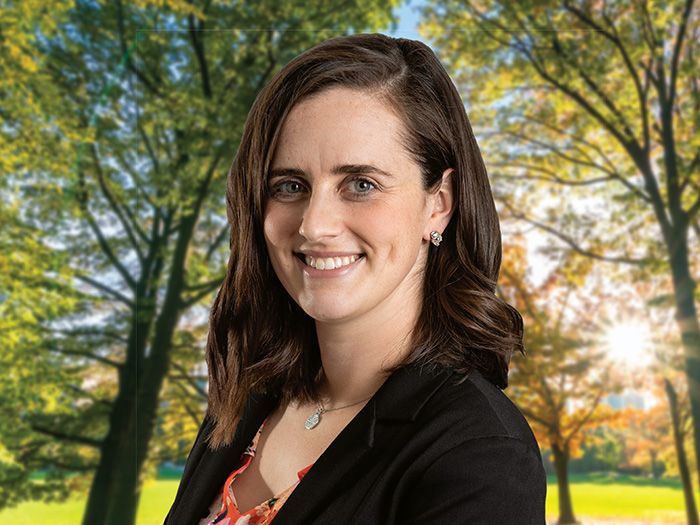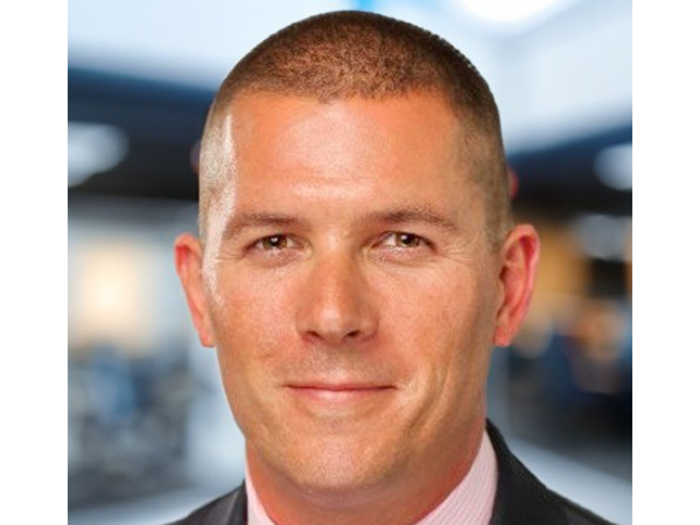From a Knack for Math to Becoming a Vermont Captive Actuary, Maigh Wright Shares Her Story

Like many lifelong Vermonters, actuary Maigh Wright grew up not knowing what captive insurance was, how important it is to her state, or that she would one day become a vital part of that industry.
“I went to school for statistics, and I didn’t really want to be a teacher,” she explained.
“I wasn’t sure what I wanted to do. I just knew I really liked math. So, I started with the actuarial exams. Actuaries do insurance. I wasn’t necessarily going for insurance, but that’s where the actuarial career led me.”
An actuarial recruiter connected her with a management consultancy active in insurance. Now, she’s working as a vice president and actuarial consultant with Marsh in her home state.
“It just happens that the office was here in Vermont because of the captive industry, and they worked a lot with captives,” said Wright.
A Sense of the Practical
While Vermont is known far and wide as a major domicile for captives, the state’s residents are largely unaware of the industry.
“I had no idea what [captives] were, [but] I was interviewing for the job, and I had to do my Googling and research on what the company I was interviewing for was, as well as captives,” said Wright.
“Someone like Maigh is a great example that you can live in a pretty rural area and be able to make a huge difference to the Vermont economy and the broader captive industry.” — Brittany Nevins, captive insurance economic development director, Vermont Department of Economic Development
“I think that’s common with students or people who aren’t in the industry. It’s not really an everyday sort of thing that you would necessarily know about. When I tell people that’s what I do, I usually have to explain what it is.”
The explanations generally don’t end there.
“The actuary piece is the same,” Wright said. “A lot of people don’t know what an actuary is.”
Among those who do, however, Wright is a bit of a star.
“Any account that’s working with Maigh should consider themselves lucky to be able to work with such a great professional,” said Tabitha Prestler, senior director of risk finance & insurance at Wilbur-Ellis.
“Maigh’s realistic, and she’s practical, and she doesn’t just look at the numbers,” said Prestler. “She tries to understand your business and how the numbers fit in, which you see happening more with actuaries, but it’s not consistent. Maigh is always consistent. She wanted to understand the business before she just jumped into the data, because she wants to understand how the data fits into the business.”
Michael Serricchio, managing director and America’s sales and advisory leader for Marsh Captive Solutions, agreed.
“Maigh is an absolute pleasure to work with,” Serricchio said. “She’s articulate, very focused on clients and does a really good job explaining to the clients the complicated subject matter of actuarial science and what our reports say.”
He also cited her excellent communication skills.
“One aspect of a recent project that we worked on had to do with some really technical pricing for a certain class of business going into a captive, and she actually did a ton of work to derive the most precise, exact premium dollar amount,” said Serricchio.
“When a client questioned something, she had a really good response and was able to articulate exactly what happened, why it happened … She was forced to step back, a couple hundred-thousand foot view of things and actually was able to pivot and do that really well. Not a lot of actuaries can do that.”
Wright’s communication skills have benefited more than just her clients.
Brittany Nevins, captive insurance economic development director for the Vermont Department of Economic Development, said Wright is both good at her core functions and as ambassador for the Vermont captive industry. The narrative that talent from the largely rural state doesn’t have to go to New York or Boston to find work is one that bears repeating, and Wright is a good example of that, Nevins said.
“Someone like Maigh is a great example that you can live in a pretty rural area and be able to make a huge difference to the Vermont economy and the broader captive industry,” Nevins added.
According to Wright, of the nearly 400 approved captive actuaries in the Vermont domicile, she is one of less than 10 that lives in the state.
“I really love being able to work in such an exciting industry and role but still have the perks of small-town living. That’s my favorite thing about living in Vermont and working in this industry,” Wright said.
“One of my other favorite aspects is that I’ve had the opportunity to travel a fair amount, pre-COVID, and I really love being able to live here in Vermont while experiencing so many different places. And I really like getting to meet clients and colleagues in person, because I think that helps build stronger relationships and learn more about them, both professionally and personally.”
She also values the diversity of experience that comes with working as a consultant.
“I like the consulting world because I like being able to work with all different companies and learn a little bit about so many different industries.”
Emerging Risks
Working in P&C provides even more variety.
“I’m glad that I landed in the P&C field. It’s been a good fit with all the variety, so not only do I have exposure to the different types of companies, but I also work with all the different types of coverages and different types of risk financing vehicles,” Wright said.
She added, “I’ve also been working a lot with emerging risks, like cannabis and cryptocurrency. I’ve been doing that as some of the formation and feasibility companies are writing that sort of risk. It’s interesting to be at the forefront of those developing industries.”
Wright’s enthusiasm for her work has increased since becoming a credentialed actuary.
“When I started out, I was an analyst and doing the leg work. I was working through my actuarial exams, and so now that I’ve passed them and I’m credentialed, I’m now the one who’s relaying the results to the stakeholders and relaying the message directly to them.”
Adding to that enthusiasm has been a move to captive formation.
“Since I joined Marsh … I’ve been doing a lot more on the formation and feasibility end of captives,” said Wright. “I’ve enjoyed that because it really gives me the chance to see the company grow from the ground up instead of just stepping in once they’re established.”
Wright values the deep knowledge and understanding that comes from working with a captive from its formation.
“If this is going to be your client, it’s nice to know it from the beginning,” said Wright. “Some of the bigger companies and bigger captives, there’s just so much to know and to learn …you’ll never know what’s gone on completely the past 20 years. When you start from the beginning, you feel like you’ve got a really good understanding of everything.”
Longevity and Stability
But while Vermont’s captive industry is so dynamic, it offers considerable stability, as well.
“Vermont really benefits from its longevity,” said Wright. “Some things just come with time, and they’ve really built a strong foundation and a strong domicile here. A big part of it is that the legislators know the importance of the industry to the state’s economy. And I think it gets the attention it needs that it might not in other states. There’s no lack of knowledgeable service providers.”
In ways, the sector’s dynamism actually contributes to that stability.
“There’s a lot of stability because of the evolving needs and the emerging risk,” said Wright.
“Companies are always looking for ways to optimize their captive program. And I see insurance as a timeless commodity. So people and companies are always going to want to protect their assets, and captives give them the opportunity to really be involved in that process and to create incentives to promote effective risk management strategies.”
Wright sees captive growth trends continuing for the foreseeable future: “They’ve been trending in that direction for many years, and I think they’re going to continue to grow. I think more and more companies recognize they can benefit from their own risk management initiatives, and a captive is a great tool for that.”
One of the only limits on that growth is talent. While Vermont’s captives have not been particularly impacted by the recent labor shortage, there is a long-term demand for talent.
“While it’s natural to have some turnover in staff, the pressing need is in keeping pace with the growing volume of business,” Wright said.
In fact, if there is one minor drawback to Vermont, it’s that, as a small state, it has a smaller labor pool.
“It’s not a big state, and we don’t have as many options for hiring,” said Wright. “Thankfully with the remote work capabilities the last few years, that’s changing a lot. So hopefully it will help.”
Spreading the word on the benefits of working in Vermont captives should help, including the fact that the average pay in the sector is about $91,000/year plus benefits, in a state that, according to the U.S. Census Bureau, had a median income in 2019 of $31,492.
“I kind of fell into the role, but it’s worked out really well,” Wright said.
“I really like the industry and the job and the variety of work that I get to see. I like to think this is where I would’ve ended up even if it’s not where I had started,” Wright said. &










